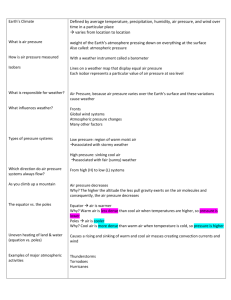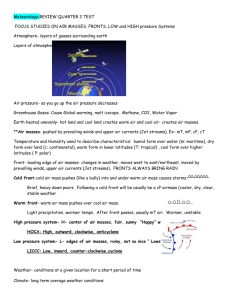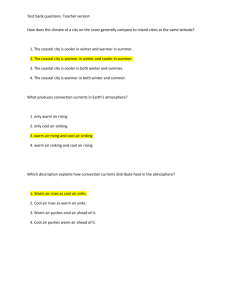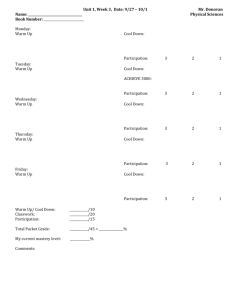Variation of time spent in microenvironments (only results with
advertisement
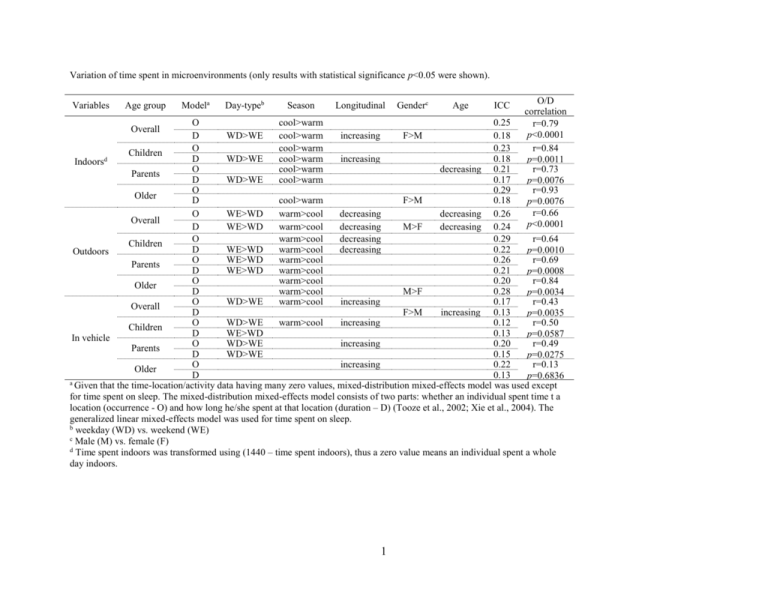
Variation of time spent in microenvironments (only results with statistical significance p<0.05 were shown). Variables Age group Modela Day-typeb Season Longitudinal Genderc Age ICC O/D correlation r=0.79 p<0.0001 r=0.84 p=0.0011 r=0.73 p=0.0076 r=0.93 p=0.0076 r=0.66 p<0.0001 O cool>warm 0.25 D WD>WE cool>warm increasing F>M 0.18 O cool>warm 0.23 Children D WD>WE cool>warm increasing 0.18 Indoorsd O cool>warm decreasing 0.21 Parents D WD>WE cool>warm 0.17 O 0.29 Older D cool>warm F>M 0.18 O WE>WD warm>cool decreasing decreasing 0.26 Overall D WE>WD warm>cool decreasing M>F decreasing 0.24 O warm>cool decreasing 0.29 r=0.64 Children D WE>WD warm>cool decreasing 0.22 p=0.0010 Outdoors O WE>WD warm>cool 0.26 r=0.69 Parents D WE>WD warm>cool 0.21 p=0.0008 O warm>cool 0.20 r=0.84 Older D warm>cool M>F 0.28 p=0.0034 O WD>WE warm>cool increasing 0.17 r=0.43 Overall D F>M increasing 0.13 p=0.0035 O WD>WE warm>cool increasing 0.12 r=0.50 Children D WE>WD 0.13 p=0.0587 In vehicle O WD>WE increasing 0.20 r=0.49 Parents D WD>WE 0.15 p=0.0275 O increasing 0.22 r=0.13 Older D 0.13 p=0.6836 a Given that the time-location/activity data having many zero values, mixed-distribution mixed-effects model was used except for time spent on sleep. The mixed-distribution mixed-effects model consists of two parts: whether an individual spent time t a location (occurrence - O) and how long he/she spent at that location (duration – D) (Tooze et al., 2002; Xie et al., 2004). The generalized linear mixed-effects model was used for time spent on sleep. b weekday (WD) vs. weekend (WE) c Male (M) vs. female (F) d Time spent indoors was transformed using (1440 – time spent indoors), thus a zero value means an individual spent a whole day indoors. Overall 1

